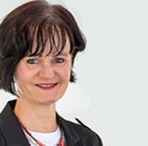Migration: Economic and Social Effects in Europe
-
Overview5 Topics
-
Background information7 Topics
-
Endnotes
-
References
-
Glossary
-
Interactive learningDeepen your knowledge1 Quiz
-
Training materialExercises for group activities1 Topic
The problem – a challenge to economic systems of the European Union member states
Fewer and fewer children are born in Europe. In 2011-2018 as many as 11 countries had a declining number of births1. Population decreases in particular countries allow us to claim that such countries need a large inflow of population in production and pre-production age as quickly as possible. A wise pro-family policy, encouraging families to have more children, is a must and we can only hope that relevant programs will become permanent in order to avoid similar situations in the future. One must remember, however, that activities taken in the country may help, but the “hole” generated in the past years will not be eliminated even by a sudden growth in the number of births. It is necessary to have some inflow of population from outside because negative demographic trends are dangerous for the economy and its development. Unfortunately, the growth in the number of births will not be sufficient to solve the problem. Another solution is needed – each EU country urgently needs willingness to work and easy assimilation of immigrants. Here religious and cultural issues are vital for the efficiency of the assimilation process.
The International Organisation for Migration identifies four main drivers of migration: ● globalisation and integration processes,
- geopolitical trends,
- transnationalism,
- demographic trends.
International population migrations are motivated by economic and non-economic reasons. Among the economic motives is the desire to find a job, improve living conditions, get a higher salary for work, improve their qualifications, gain work experience, or learn a language. There are many non-economic reasons, they are conditioned by many factors, including political, religious or racial persecution, but also be the result of overpopulation of the society, high unemployment or poverty.
The causes of migration processes are divided into general global factors that affect all migration processes, push factors and pull factors that encourage immigration. This division is associated with various conditions, such as: historical, demographic, socio-political, economic, etc.
Table 1: Non-demographic reasons for migration.
|
Types of factors |
Push factors |
Pull factors |
|
Historical |
-the existence of nationality clusters in a given country -existence of cultural, educational and religious institutions of a given group of immigrants |
-existence of old centres of refugees (e.g. Poles in France) -existence of large centres of new immigration favours the arrival of immigrants representing the same nationalities and greatly facilitates |
1 Author’s own analyses based on statistical data from the European Union countries. 5
|
their assimilation into new environments |
||
|
Socio-political |
-discrimination against national minorities; armed social conflicts -restriction of basic human rights -disillusionment and frustration with the formation of a new regime -danger of authoritarian dictatorship or civil war |
-benevolent attitude of society, public opinion and political parties towards foreigners and ethnic minority -ability to absorb foreign cultures |
|
Economic |
-high level of unemployment -lack of employment opportunities in your profession -poor housing situation -poor supply of consumer goods in stores -extinction and high purchasing power of foreign currencies etc |
-the degree of expansion of “welfare state” institutions -low unemployment rate -employment opportunities -demand for foreign labour -high rate of economic growth -investment determining demand for labour |
|
Law |
-liberal passport and foreign exchange purchase regulations |
– no visa requirements -liberal immigration regulations, including those concerning family reunification -regulations defining the status and social rights of political refugees and migrant workers -ease in obtaining asylum and work permits |






